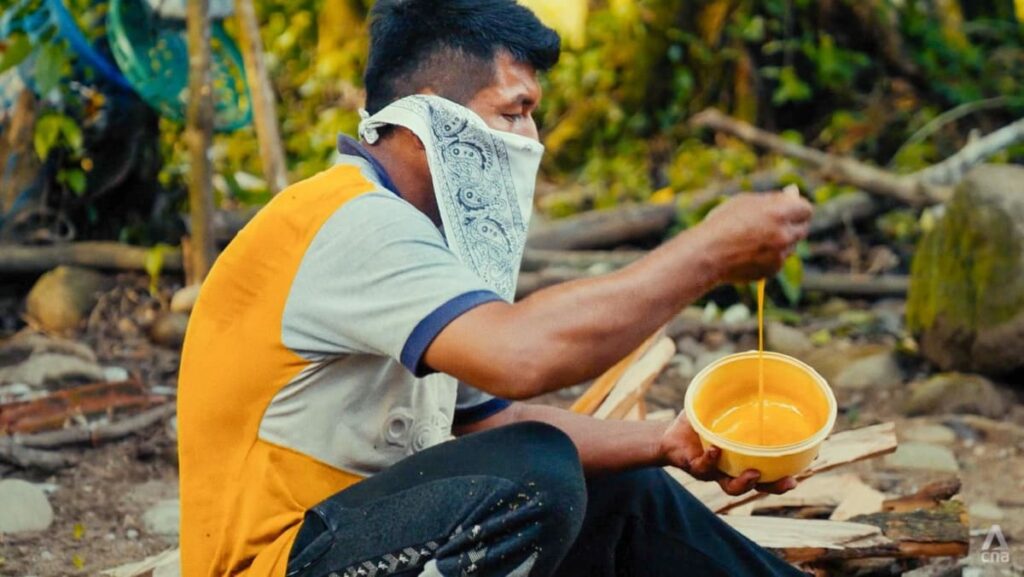“It’s incredibly easy to buy,” added Yosakorn Khunpakdee, coordinator of the Youth Network Against Cannabis. “Do they check the buyer’s age? No.”
Another student, 16-year-old *Kiet, recounted how trying cannabis last year affected him.
“I came to school just to nap. I was in a daze, dull and drowsy,” he said. “I looked shabby and thin. … My (academic) performance was bad. My memory was impaired.”
Thailand is currently tightening control of marijuana use, with a fresh plan to require medical certificates for buying cannabis. Three years after decriminalisation, the impact has been felt not just among the young.
“Some tourists have consumed too much cannabis, causing them to lose control, sometimes leading to suicides,” said Paisan Limstit, a committee member at Thammasat University’s Health Laws and Ethics Centre. “There have been several cases of Thai people committing suicide too.”
Over in Canada, there is a fentanyl crisis. The synthetic drug, 100 times stronger than morphine, was behind three in four opioid-related overdose deaths last year.
Between January 2016 and last September, there were almost 51,000 apparent opioid deaths, mostly involving fentanyl.
“What started happening was, states on the US side started legalising medical marijuana,” said crime reporter Kim Bolan. “Suddenly, black market cannabis wasn’t as much of a (lucrative) product … (so criminals) started making synthetic drugs.”
To encourage addicts to seek treatment, the province of British Columbia launched a pilot in 2023 that permitted the possession of small amounts of hard drugs, such as heroin and methamphetamine, for personal use in specific locations.
“What ended up happening was that a significant number of people taking those drugs were using them as a currency on the street and trading them for deadly fentanyl anyway,” said Elenore Sturko, a British Columbian legislative assembly member.
In the year that followed decriminalisation, opioid-related deaths also rose by nearly 5 per cent. Last April, British Columbia’s premier reversed the decriminalisation pilot in public spaces, citing the need to “keep people safe” and stop public disorder.
3. MEET THE PEOPLE MAKING A DIFFERENCE ON THE GROUND
In Karachi, Pakistan, a mix of religion and going cold turkey is the treatment strategy for recovering addicts in a sparse facility. As they huddled on the floor of Detox Ward (B), they turned their palms upwards in prayer.
“We harness their willpower to keep them going through the detox phase,” said Umair Ansari, the manager of Sunshine Rehabilitation Welfare Centre.
The centre’s conditions are grim, but these patients are the lucky ones. Drug addiction treatment is available to fewer than 30,000 drug users a year, in a country with 6.7 million drug users who consume narcotics like cannabis and meth.
“The happiness we used to get after an hour of taking drugs, now we feel that happiness for 24 hours,” said one recovering addict. “Alhamdulillah (All praise is due to Allah), we now have everything.”
Over in Saraburi, central Thailand, the Wat Thamkrabok Temple is battling the country’s drug abuse crisis with its ancient Buddhist methods.
Nearly three million individuals or approximately 4.6 percent of Thailand’s population are synthetic drug users. Over 95 percent of these drug addicts are between 15 to 59 years old, the prime working age.
“The first five days (here) are a battle against the lingering toxins in their body. And against their memories and emotions,” said Phra Ajahn Vichit Akkajitto, the temple’s vice abbot.
New inductees line up against a long drain before downing a potent herbal shot. Almost instantly, they double over while retching, as others cheer them on.
“This is Hua Ya Bamrung, (a herb plant) essential for detoxification and recovery,” said Akkajitto. “As drugs are consumed, alkaloids and other toxins accumulate in the body. This process helps flush them out daily.”
Patients here also sweat out more toxins in herbal steam rooms and spend their days exercising and meditating under the monks’ guidance.
One unexpected face among the recovering addicts is Elena, a Russian ex-meth user who has been here for two months.
“I lost my husband. I lost my family,” she said. “And I came to a point where probably I (would) either die or just do something drastic.”
“I was lucky that my friends brought me here,” she added. “You have to understand, … we’re unwell people. And then eventually, gradually, you see how people start getting better.”
Last but not least, CNA got to see how those in Singapore who were once caught up in drugs are trying to help others avoid the same fate.
Former drug addict Andrew Ong, co-founder of Break the Cycle, is one such individual.
“We ride (bicycles) to break the cycle of recidivism,” said Ong. “As a way to reintegrate, right, and to make new friends.”
“As an ex-offender myself, I understand that (breaking) a habit is very difficult. You can’t just say ‘I quit’ or ‘I stopped.’ You need to replace a bad habit with a good habit.”
Besides giving members a sense of belonging and an outlet to release stress through sports, Break the Cycle has also helped ex-offenders struggling to get back on their feet.
Bernard Lim, a former drug addict, recalled how the interest group helped him when he struggled to land a skilled job after leaving a halfway house.
Besides sponsoring him for upgrading courses to become a specialised mechanic in Brompton bicycles, Break the Cycle also connected Lim to his current employer. “That gradually helped me to move away from my old addictions,” said Lim.
Catch the premiere of Addicted at 9pm tonight, on air or on CNA Insider’s YouTube channel.
https://www.channelnewsasia.com/cna-insider/addicted-inside-drug-trade-frontline-global-war-cannabis-fentanyl-5149341


